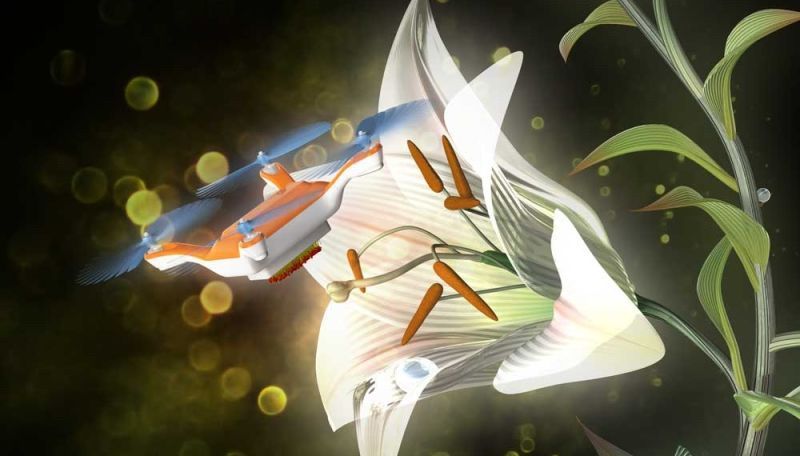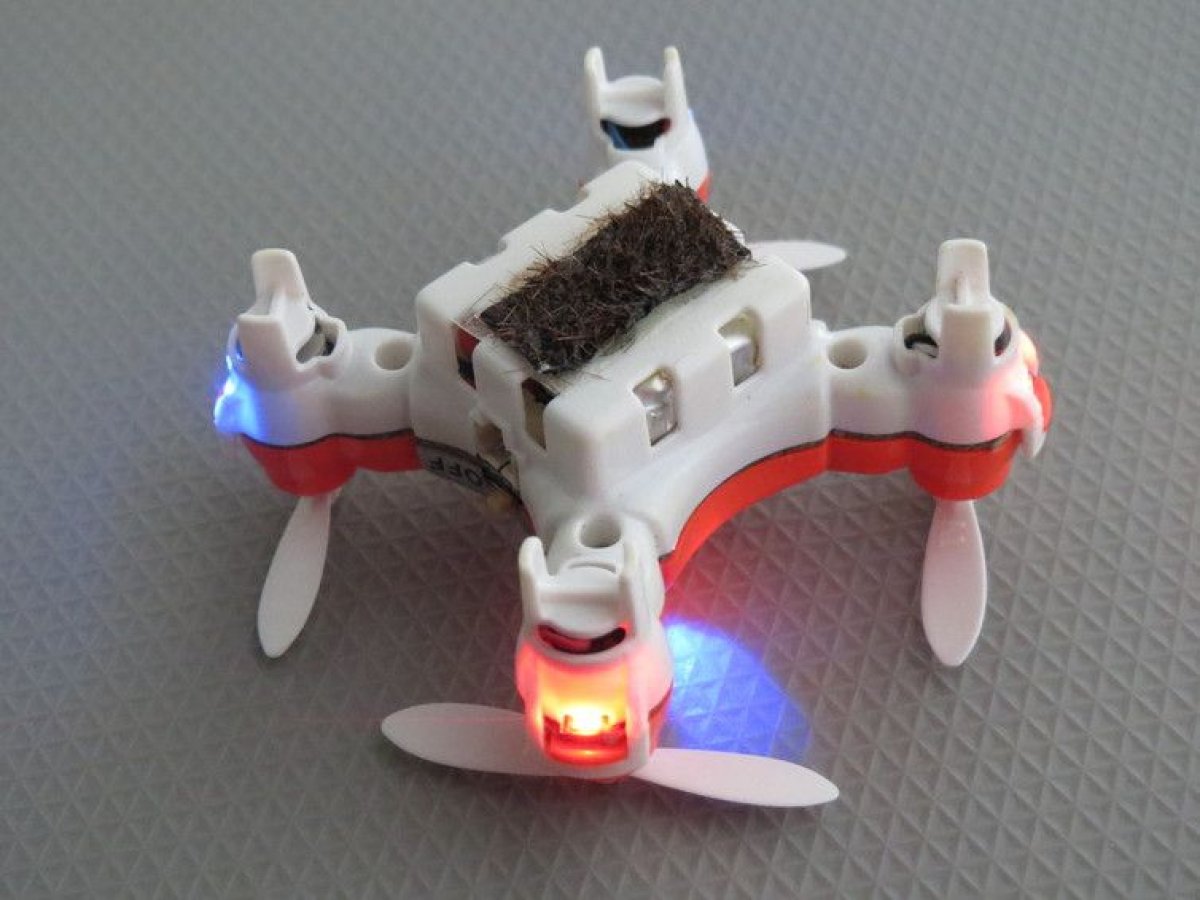
Bees are in decline in many areas. That's a problem for agriculture because bees are vital to the environment and are primarily responsible for pollinating many plants—$15 billion worth of crops in the United States alone, including berries, apples and almonds.
Some researchers have come up with the idea of creating robotic bee-like drones to take over the job of pollination.
The only problem: All of these drones are so far wildly expensive, ineffective and would be dangerous to real bees. Moreover, it's a mistake to think that technology can solve problems created by extinction and biodiversity loss.
It was thus concerning to see the latest "drone bee" study get so much wide-eyed press. Researchers from Japan's National Institute of Advanced Industrial Science and Technology have created a 1.6-inch by 1.6-inch drone with four rotor blades that they say is the first to ever pollinate a flower. Many outlets suggest the drones could help bees, or take the pressure off their pollinating duties.
It's hard to see how these drones would be helpful, though, considering that if deployed in the same place as bees the machine's blades and loud noise would likely kill and scare away real bees.
These drones cost about $100 each, and so far are controlled manually. As explained in The Conversation, in one of the few skeptical takes on the research:
Writing in a paper in the journal Chem, the team demonstrated their drone on an open bamboo lily (Lilium japonicum) flower. With a bit of practice, the device could pick up 41% of the pollen available within three landings and successfully pollinated the flower in 53 out of 100 attempts. It used a patch of hairs augmented with a non-toxic ionic liquid gel that used static electricity and stickiness to be able to "lift and stick" the pollen. Although the drone was manually operated in this study, the team stated that by adding artificial intelligence and GPS, it could learn to forage for and pollinate plants on its own.
That's not a great success rate, and lilies are among the easiest plants to pollinate, with large, obvious sex organs. The researchers suggest the drones could be optimized with artificial intelligence and autonomous operation, but when you add up all the costs of materials, and start thinking about how they could be powered and controlled, it quickly becomes obvious how impractical an idea it is.
There are, after all, a LOT of bees. As MIT Technology Review points out, the almond industry in California alone "requires 1.8 million hives—containing around 35 billion bees—to pollinate 900,000 acres of almond trees that sprout three trillion flowers."
"I don't see any technology that could replace bees," California bee specialist Joe Traynor tells the publication.

Moreover, the drones so far are almost comically ineffective. As you can see in the video, the drone slams into the flower, and you can hear the machine hitting the ground shortly thereafter.
There are other groups that have worked on robot bees, including a group at Harvard. Technology guru Nathan Myhrvold also filed a patent application in 2015 for flying pollinators, and Polish researchers are developing similar devices.
All of this work has received a high volume of "science-is-awesome" type of coverage that's completely misplaced, cynical and even dangerous. Not only does it presuppose a dystopian future in which we don't have bees—which is a world that almost certainly couldn't support humans, and one in which no sane person would want to live—it's a worrisome trend in journalism: aping technological solutions for human-caused ecological problems. The solution isn't to come up with a technology to prevent the problems, but to avoid the problems in the first place—in this case, the decline of bees and loss of species.
This requires a different, and perhaps more difficult, course of action. It takes engagement with the public, politicians and policy-making. For example, the rusty-patched bumblebee, which has lost 90 percent of its range in the last 20 years, was the first bee to be slated for protection under the Endangered Species Act, in January. But the Trump administration reversed that ruling one day before it went into effect, leaving the bee's future in question. The solution certainly isn't to make artificial rusty-patched bumblebees. To act as if an artificial creation could even come close to replacing something like a bumblebee is to act insane.
You know what's good at pollinating flowers? Bees. Let's keep them around. As biologist David Goulson from the University of Sussex writes on on his blog:
I would argue that it is exceedingly unlikely that we could ever produce something as cheap or as effective as bees themselves. Bees have been around and pollinating flowers for more than 120 million years; they have evolved to become very good at it. It is remarkable hubris to think that we can improve on that. Consider just the numbers; there are roughly 80 million honeybee hives in the world, each containing perhaps 40,000 bees through the spring and summer. That adds up to 3.2 trillion bees. They feed themselves for free, breed for free, and even give us honey as a bonus. What would the cost be of replacing them with robots?
…[Furthermore,] pollination is not all done by honeybees. Numerous other insects pollinate crops and wildflowers, including butterflies, beetles, moths, flies, wasps and many more. These come in all sorts of different shapes and sizes suited to different flowers. Honeybees contribute at best one-third of crop pollination, averaged across crops. So we wouldn't just need to replace the 3.2 trillion honeybees. We'd also need to replace countless trillions of other insects.
Indeed. It should also be noted, as others have, that there's an episode of the TV show Black Mirror where researchers create robot bees. Spoiler alert: The bees kill everybody.
Uncommon Knowledge
Newsweek is committed to challenging conventional wisdom and finding connections in the search for common ground.
Newsweek is committed to challenging conventional wisdom and finding connections in the search for common ground.
About the writer
Douglas Main is a journalist who lives in New York City and whose writing has appeared in the New York ... Read more
To read how Newsweek uses AI as a newsroom tool, Click here.








